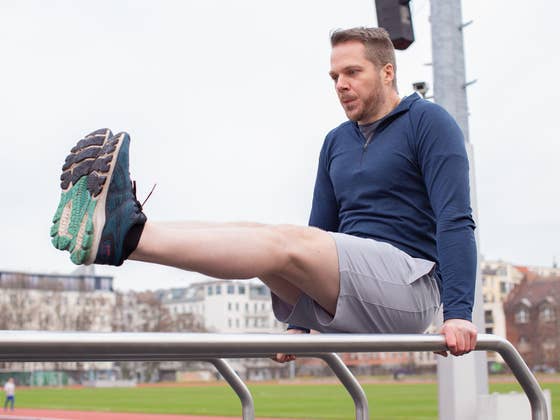If you feel like your workouts no longer deliver results the way they did in your early twenties, it is not a glitch in the system. It is simply how the body works. After 30, muscle loss happens naturally and progressively. And if, like me, you only started paying real attention to your fitness after 40, the good news is that there is indeed a smarter way to train in order to gain and maintain muscle.
What you might not know is that this loss has a name: sarcopenia. It is not just a matter of appearance because it directly affects our health, our mobility, and ultimately our quality of life. The fact is that after 30 we lose between 3 and 8 percent of our muscle mass per decade. After 60, this pace only speeds up. What is even more shocking is that by the age of 80, many people have lost almost half of their muscle mass.
The main villain here is something called anabolic resistance. Over the years, our muscles simply stop responding as well to training and protein intake. The result is that gaining strength and muscle mass now requires more strategy and less guesswork. According to fitness experts, workouts need to be better planned. Another important point is to adjust protein intake to your body’s needs.
There is more. Hormonal changes such as the decline in testosterone and growth hormone levels start to directly affect the development and maintenance of your muscle mass. On top of that, we also face the loss of neural connections to muscle fibers. All of this makes the process more challenging, but far from impossible.
What You Need to Do to Gain Muscle After 30
First, aging is natural. Aging well is a choice. If you have reached that moment when you notice a certain stagnation in your ability to maintain or gain muscle, experts agree there are at least three points that deserve your attention from this stage of life onwards.
The first is to prioritize strength training two or three times per week with a focus on the major muscle groups. In other words, those that hold the greatest volume of fibers and play a key role in movement and strength. We are talking about the chest, back, quadriceps, glutes, and shoulders, for example. The most important thing here is to keep the focus on progressive overload. Gradually increase weight, repetitions, and training volume.
In addition, it is essential to respect recovery. Sleep, hydration, and rest between workouts are key factors for your body to respond well to the stimulus.
Finally, attention to protein intake is also recommended. Muscle mass is built and preserved from amino acids. Nutrients like vitamin D and omega-3 are also proven allies of muscle health. It is worth speaking to your doctor to understand whether supplementation makes sense in your case.
Understand Your Body Beyond What You Feel
My job is to test wearable devices such as smartwatches, fitness trackers, smart rings, and other gadgets capable of generating and analyzing health, fitness, and activity data. These devices have evolved a lot and today can offer advanced data such as the impact of a workout on your body, sleep quality and consistency, and even how alcohol intake affects you from one day to the next. That is why my advice is to also adopt a holistic approach to your health using these devices.
To monitor recovery, sleep, heart rate, and even training load based on your body’s real response, you can benefit from devices from brands like Oura, Whoop, Garmin, Polar, Fitbit, and Amazfit. Models like Apple Watch and Galaxy Watch also do a good job tracking your sleep, stress levels, and activity with good accuracy.
There is more. You can also opt for smart scales. Give preference to models with a detailed view of body composition, including analysis of muscle mass segmented by limbs. This way, you can track your progress with concrete data and build a data bank to understand trends.
Another strong point of wearables is that they show in an objective and easy-to-track way how you are progressing in gradually increasing load, volume, or intensity of your workouts. In other words, progressive overload is the consistent tracking that science recommends for those who want to maintain or gain muscle mass after 30.
Finally, gaining muscle mass is a matter of health and well-being, much more than appearance. In fact, studies show that even loss of grip strength is a strong indicator of future health issues. Yes, gaining muscle with age takes more effort, but nothing beats structured training, aligned nutrition, and understanding your body when it comes to hacking biology.




0 comments